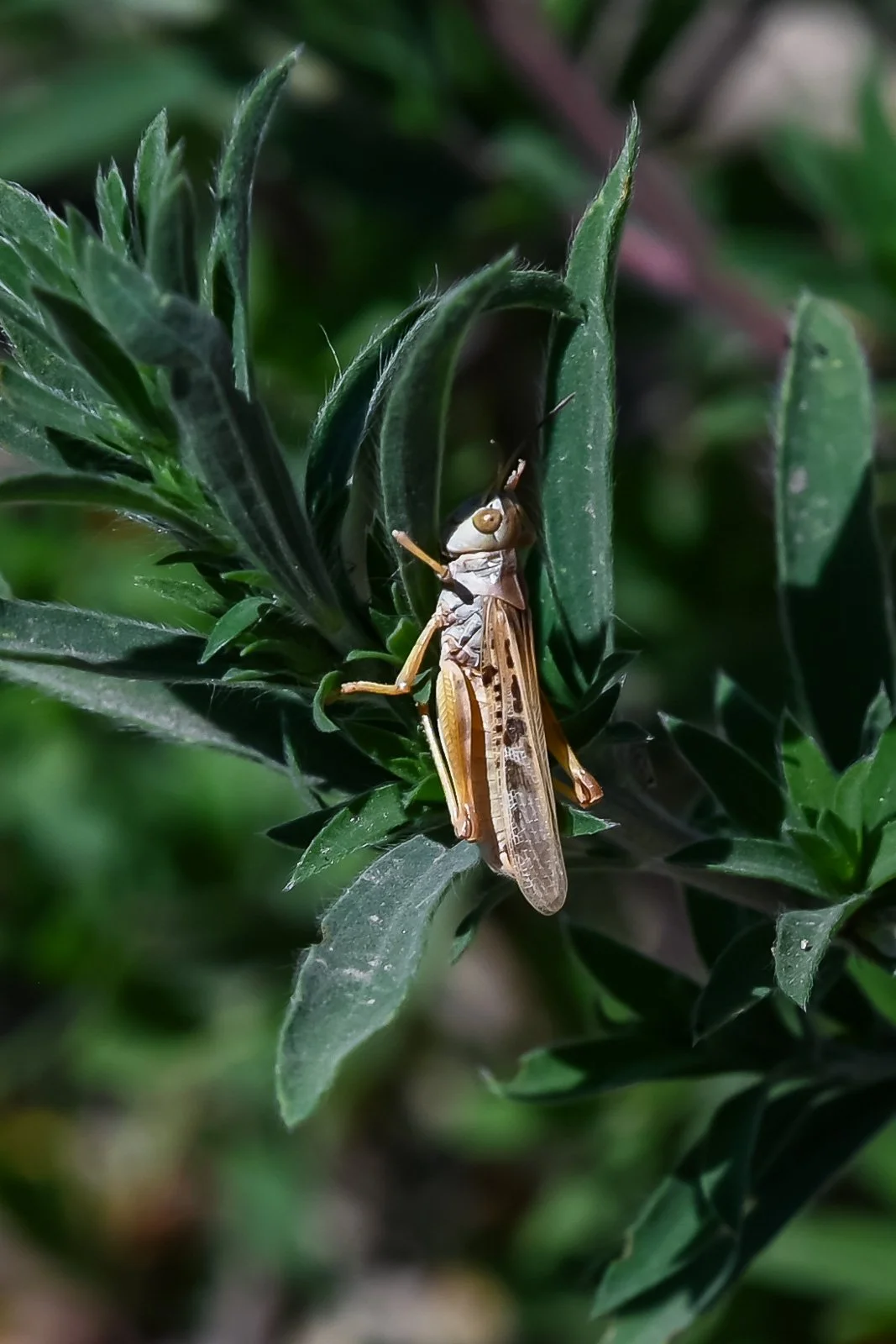"Biblical" plague of grasshoppers reveals unintended consequences of a de-watered landscape
/Article by Moss Driscol, Klamath Water Users Association. Images by Chelsea Shearer.
KLAMATH BASIN - For several weeks now, as the morning cool turns to the heat of the day, vast swarms of voracious grasshoppers have been pouring out of the dry, largely barren Lower Klamath National Wildlife Refuge into the surrounding irrigated farm fields around Merrill and Tulelake. Concerns are growing that crop damage could extend into the millions of dollars.
“I have never seen anything like it,” said lifelong Tulelake farmer John Crawford. “They fly over my house at the base of Sheepy Ridge each morning and descend on our fields. They are all coming from the dry portions of the refuge.”
With outbreaks that coincide with warm, dry conditions, grasshoppers have been a growing problem during the extended drought across the West. In 2021, Oregon suffered its worst grasshopper outbreak in half a century, with an estimated 10 million acres impacted across 18 counties. Last year, similar outbreaks were reported throughout northern California, including portions of Modoc County. Yet the cold, wet winter that the Klamath Basin just experienced should have knocked back numbers to some degree, as grasshoppers are susceptible to naturally occurring fungi that act as a check on populations.
Grasshoppers probably benefitted from the vegetation that grew from all the water, along with the warm spells observed in May, June, and now July, but that doesn’t explain the level of infestation being observed this year. Drive along Stateline Road, however, through the middle of Lower Klamath National Wildlife Refuge, and the picture starts to become clearer. Passing along the only flooded portion of the refuge, Unit 2, the grasshoppers are absent. As you near the end of these wetlands, the road ahead appears to be literally moving as the hordes of grasshoppers march north out of the dry, barren portions of the refuge. Yellow stains across the asphalt mark the edge of the migration.
“It’s night and day,” said Ken Sandusky, Resource and Development Director for the Modoc Nation, describing the transition from the flooded refuge to the dry portion. Sandusky, who is working to restore the tribe’s properties on the southeast side of the refuge, suggests the outbreak is signs of a larger ecological dysfunction. “We’re looking at an almost complete loss of the cover crop the Modoc Nation invested in that we had hoped to establish in our efforts to restore sage-steppe habitat at Modoc Nation Ranches south of Lower Klamath Lake”.
In recent years, in response to outbreaks of grasshopper and Mormon crickets, the U.S. Department of Agriculture has expanded its grasshopper suppression program, particularly on federal rangelands. The program has been subject to litigation and public campaigns from environmental groups, for instance, recently stopping a planned treatment of 25,000 acres in New Mexico.
The Western U.S. is home to nearly 400 different species of grasshopper, but only a dozen are considered pests. Each year, a single generation is born from eggs that have overwintered in “pods” laid in the top two inches of the soil. Typically, a female lays between one to four pods, with 20 to 100 eggs in each. Immature grasshoppers (nymphs) molt five to six times over 30 to 40 days to reach adulthood, where they will survive two to three months unless treated. As adults, grasshoppers can easily travel over ten miles to find suitable vegetation.
Grasshoppers can eat more than two times their body weight in a single day. Thirty pounds of grasshoppers can eat an equivalent amount of grass as a 600-pound heifer. Beyond damage to crops and pastures, they strip forages that deer and other wildlife depend upon.
While various forms of chemical and biological treatment exist for managing grasshoppers once they have hatched, it is far easier to deal with the eggs while they are still in the soil. Tilling is one method for established croplands after eggs have been laid. Mowing spring vegetation before eggs hatch is another.
Lower Klamath and Tule Lake National Wildlife Refuges, two of the earliest refuges established for the protection of migratory shorebirds and waterfowl, have never been a source of grasshoppers because they have historically been dominated by wetlands intermixed with rotational cropping. Now, both refuges are completely dry except for a small area in each. Mustard weed, poison hemlock, and other weeds have replaced the tules, sedges, and other wetland plants, and constitute the only remaining food source for the billions of grasshoppers that have emerged this spring. Lower Klamath, a refuge that as recently as 2019 was the origin of hundreds of thousands of ducklings, in addition to its historical habitat for fish and other wildlife, is now the source of what many are referring to as a “plague” of grasshoppers.
For John Crawford, who also serves as the president of Tulelake Irrigation District, the first concern is for impacted producers. “We are looking at potentially millions of dollars in crop losses and additional production costs at this rate,” he said. “We don’t yet know how bad it’s going to be.” According to Crawford, pasture grass, alfalfa, and wheat have been the crops most impacted so far, but potatoes are not far behind.
Crawford, a hunter, fisherman, wildlife enthusiast, and former board member of the Nature Conservancy of Oregon, also sees the outbreak as an indictment on the current federal management of water and refuges in the Klamath Basin. “This is the consequence of single-species management for fish – and now we need some single-species management finally – for grasshoppers!”










